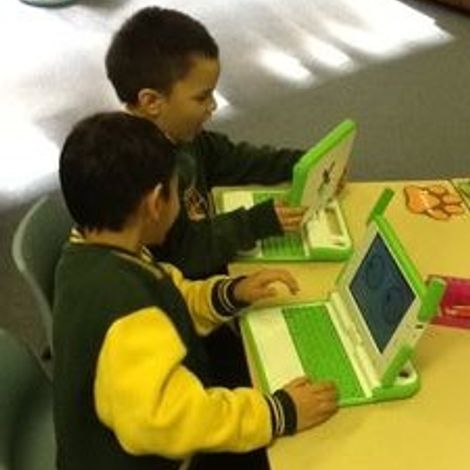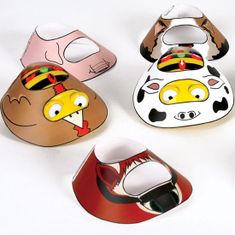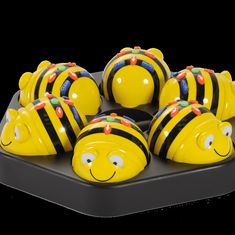Primary Schoolers Programming with Bee-Bots




Steve Jobs is quoted as saying “Everybody in this country should learn how to program a computer... It teaches you how to think”.
We want to get our students started in programming! And that is where the Bee-Bot robot comes in. (Yes, it looks like a tiny adorable Bee. On wheels. Because, robots.)
The Bee-Bot's simple and child friendly layout is a perfect starting point for teaching control, directional language and programming to young students. It is a hands-on and interesting way to get our students to understand how robots and computers are programmed at a basic level. The Bee-Bots are small robots with directional input buttons on the top of them. A student must press the buttons for the directions first, hit go and watch as the Bee-Bot buzzes off on its journey based on what has been pressed. This input mirrors the basic programming language used in programs such as Scratch, which the older students at the school are introduced to.
Having the Bee-Bots in our school would enable students in Kindergarten, Year 1 & 2 to think critically and use problem solving techniques whilst interacting with robotics. Computer programming and coding develops students’ computational and critical thinking skills and shows them how to create rather than simply use new technologies. This fundamental knowledge is needed to prepare students for the 21st century, regardless of their ultimate field of study or occupation. The use of these robots also fulfils educational outcomes across the curriculum such as direction and using coordinates in maths, experimenting and problem solving in science and exploring language use for a range of purposes in literacy.
If we start these little minds ticking over about the possibilities coding and programming can have... we may be a few steps closer to the ultimate app, computer program or robotic space exploring cyborgs.